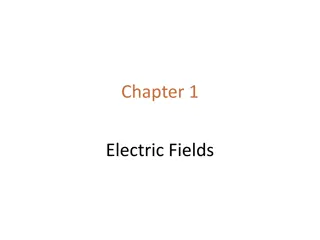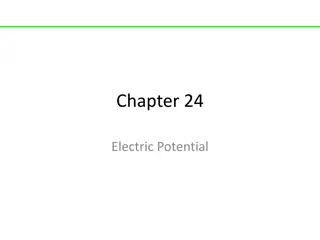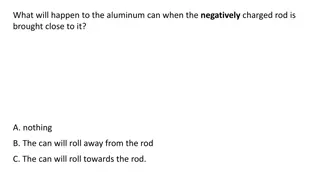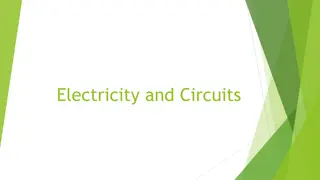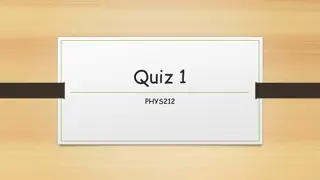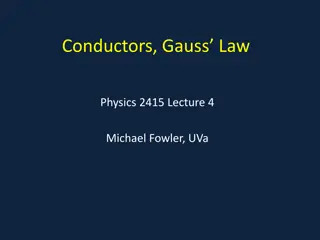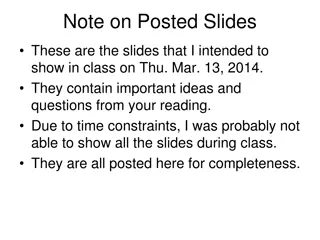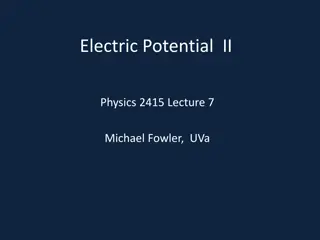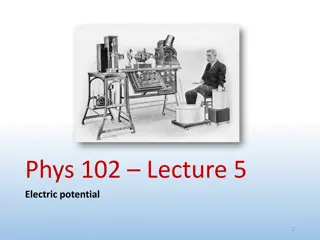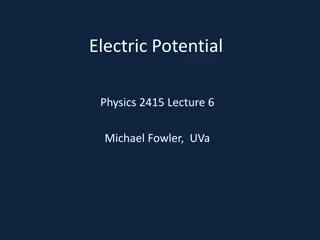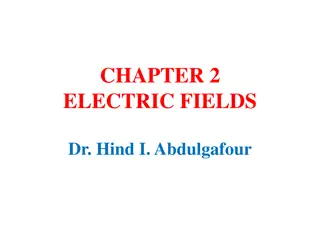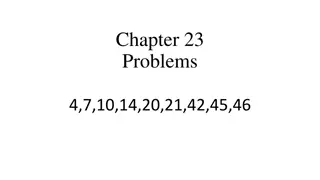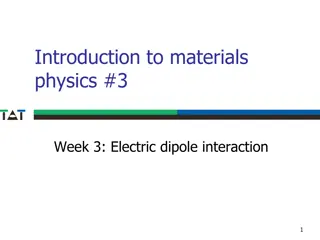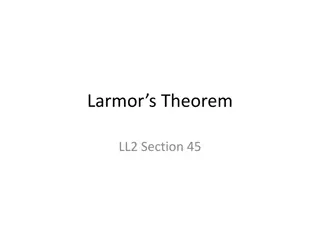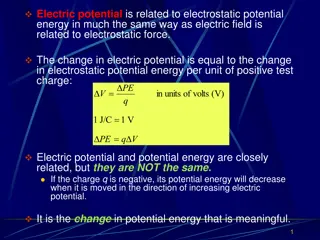Understanding Electric Charges and Fields in Physics
Electrostatics is the study of forces, fields, and potentials arising from static charges, including positive and negative charges which interact based on the principles of like charges repelling and unlike charges attracting. By convention, electrons are considered negative, while protons are positive. The properties of electric charge include additivity, conservation, and quantization. Coulomb's Law describes the electric force between charged objects, being proportional to the product of charges and inversely proportional to the square of the separation distance. This force is a vector, with direction determined by the relative signs of the charges and follows the superposition principle when multiple charges are involved.
Download Presentation

Please find below an Image/Link to download the presentation.
The content on the website is provided AS IS for your information and personal use only. It may not be sold, licensed, or shared on other websites without obtaining consent from the author. Download presentation by click this link. If you encounter any issues during the download, it is possible that the publisher has removed the file from their server.
E N D
Presentation Transcript
ELECTRIC CHARGES AND FIELDS CLASS-XII PHYSICS
ELECTROSTATICS Electrostatics deals with the study of forces, fields and potentials arising from static charges. Electric charges are of two types Positive Charge Negative Charge Like charges repel each other Unlike charges attract each other
ELECTROSTATICS By convention, the charge of electron is considered as negative and charge of proton is considered as positive The substances which allow electricity to pass through them are called conductors The substances which do not allow electricity to pass through them are called insulators
ELECTROSTATICS Electric charge is a basic property of matter Basic Properties of Electric Charge Additivity of charges- If a system contains two point charges q1 and q2,the total charge of the system is obtained simply by adding algebraically q1 and q2 Charge is conserved- For an isolated system, the net charge of the system remains constant Quantisation of charge- The fact that electric charge is always an integral multiple of e is termed as quantisation of charge
Coulombs Law Coulomb found that the electric force between two charged objects is Proportional to the product of the charges on the objects, and Inversely proportional to the separation of the objects squared F = kq1q2/r2 k being a proportionality constant, having a value of 8.988 x 109Nm2/c2
Electric Force As with all forces, the electric force is a Vector The direction of the force is either parallel or antiparallel to the unit vector depending upon the relative signs of the charges
Superposition of Forces If there are more than two charged objects interacting with each other The net force on any one of the charged objects is the vector sum of the individual Coulomb forces on that charged object This is called superposition principle
Electric Field The Electric Force is like the Gravitational Force The electric force can be thought of as being mediated by an electric field. A Field is something that can be defined anywhere in space
Electric Field We say that when a charged object is put at a point in space, The charged object sets up an Electric Field throughout the space surrounding the charged object It is this field that then exerts a force on another charged object
Electric Field Lines An imaginary line that at any given point has its tangent being in the direction of the electric field at that point At any given point, there can be only one field line The electric field has a unique direction at any given point Electric Field Lines Begin on Positive Charges End on Negative Charges
Electric Dipole An electric dipole is a pair of point charges having equal magnitude but opposite sign that are separated by a distance d.



